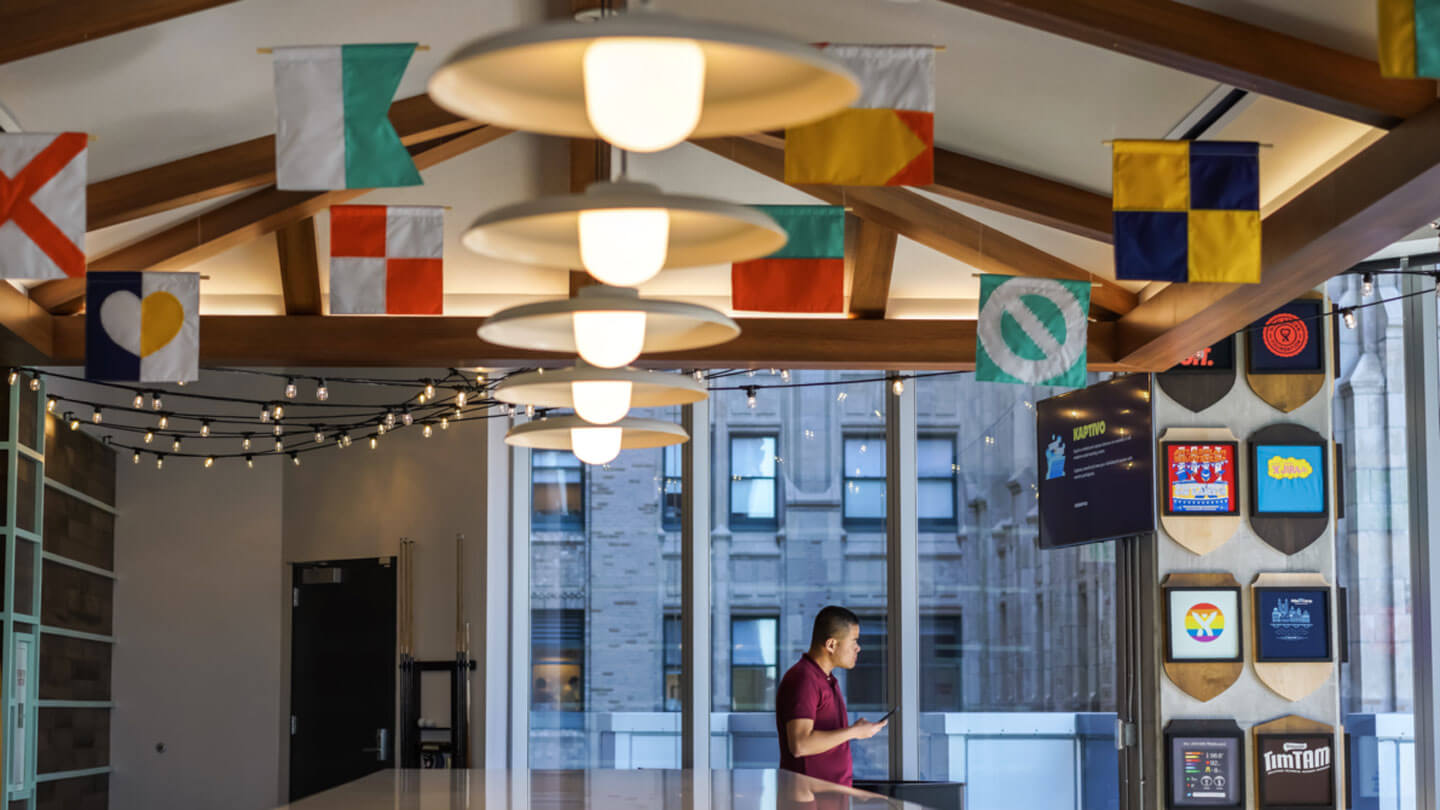The concept of “intentional design” is vital for Australian software developer Atlassian. The Sydney-based, publicly traded company maintains 10 offices across the globe — from New York to Amsterdam to Manila — and it embedded this philosophy throughout its recently launched San Francisco location.
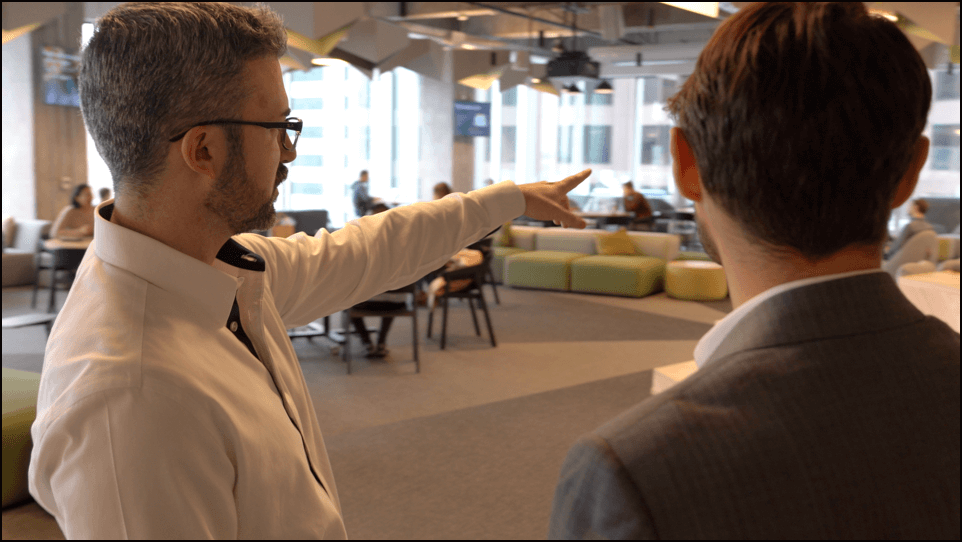
“We want everything in the space to serve a purpose,” says Omar Ramirez, senior program manager of workplace R&D at Atlassian in a recent Density-hosted webinar on office design. Listen to the full webinar below:
Flexibility with purpose
Even before joining Atlassian, during his stints at Google, Netflix, and Dropbox, Ramirez began developing a sense that workplace design and productivity were linked. “Something we do very intentionally is provide a space in each office that is more of a common space,” he says. “This space is really meant to be very welcoming but can also serve any purpose we want.”
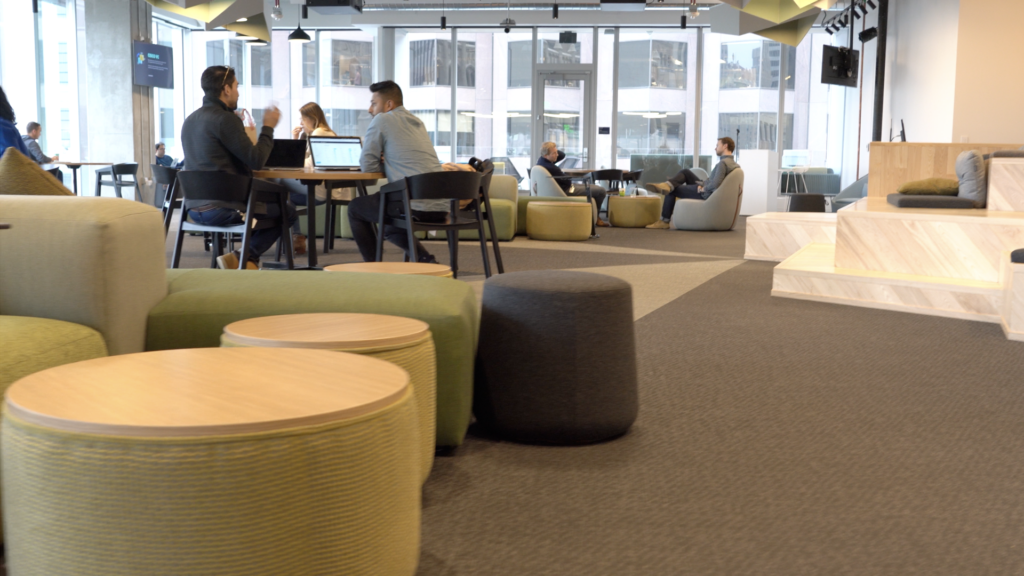
Adaptability is always a priority. On a typical morning, for example, the common area may host casual meetings or people typing away on a laptop. Then, every Thursday at 2 pm, video screens drop down and the mics are turned on for the weekly all-staff meeting. “This space being flexible is very important to us because it serves many purposes,” says Ramirez. “We could be hosting an event here, a meet-up, an all-hands or a lunch.”
But how does a company decide what spaces should serve what purposes? How do you actually determine which direction to go with your intentional design?
The bigger picture
For Atlassian, data generation and analysis is at the heart of everything.
“When people think about data, they think about just numbers on a screen,” says Ramirez. “But if you look back at the history of how architects actually program spaces, there are lots of types of data.”
He points to observational data, conference room-booking data, Google Calendar data and space-usage data collected by Density. “All of these things are little inputs, and they all help form a larger picture,” he says.

When stitched together, that bigger picture provides the framework for an effective workplace. It tells the company how individual teams work, what systems they use, and what technology the actually need. Perhaps above all, Atlassian strives to understand how its teams meet and collaborate. “Getting information about that is vitally important to us right now,” he says. “I think everyone has experienced this problem in their lives: There are simply never enough conference rooms.”
No matter what they say on an employee survey, people will always vote with their feet for the spaces they prefer.
Ramirez is starting to learn the secrets behind this age-old mystery. There is a big difference between how people say they book meeting rooms and how they actually book meeting rooms.
“That’s a thing we’ve been trying to solve recently by working with Density,” he says. “Who is physically present for meetings vs. who is shown on the calendar invite? There is always a bit of disparity there, and that is one of the main factors we are looking at as a critical piece of data.”
Listening to employees
By tracking usage data, Atlassian takes the guesswork out of office design. No matter what they say on an employee survey, people will always vote with their feet for the spaces they prefer. So, it’s important to collect accurate utilization metrics for the spaces employees use.
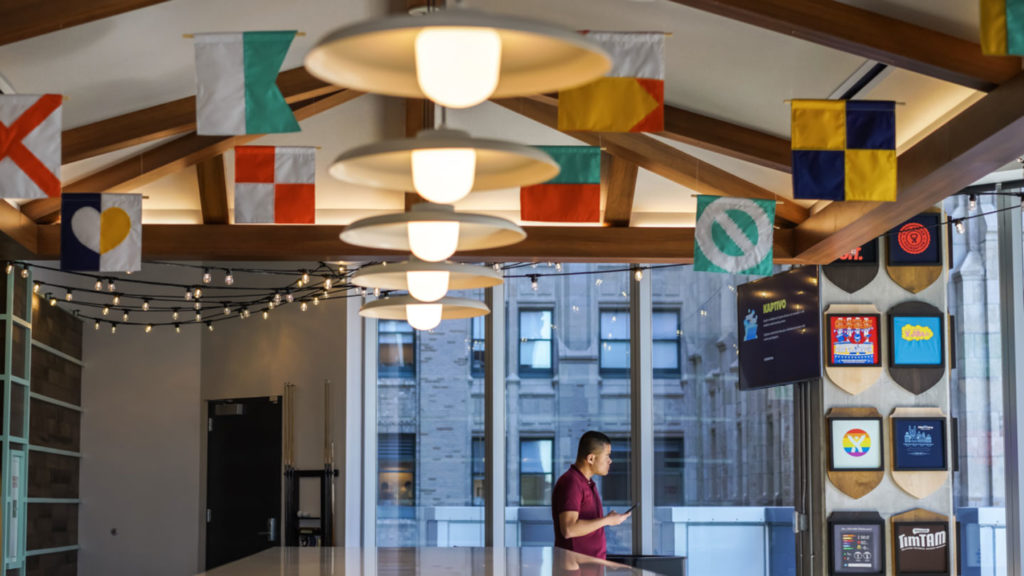
Another method the company uses is simple observation. Ramirez tries to recognize when the same person uses the same area over and over, for example. He may also notice when they move a chair around or adjust a table. He then asks the simplest of all questions: “Why?” Ultimately, determining the reason that people adapt these spaces helps the company better understand its employees.
To get even more insight into how space is used, the company engages in quarterly employee focus groups and tries to make changes based on the feedback. In this way, Atlassian cultivates something of virtuous circle.
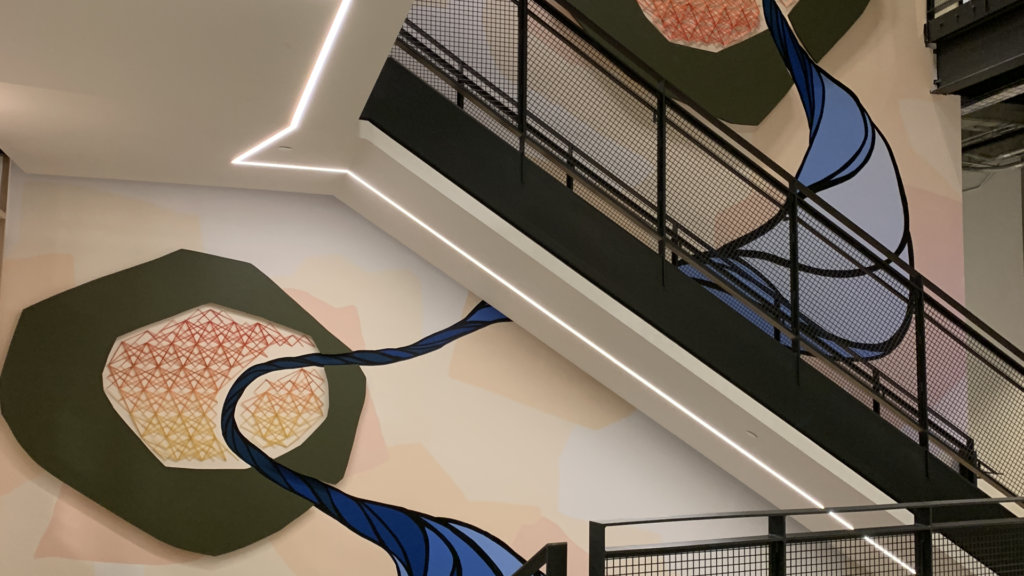
“If people understand that you’re actually listening to them, there is a trust that is formed,” he says. “Then, they are more likely to give you more feedback — and that creates more data for you to work with. Then your programming gets better. And if you programming gets better, your spaces get better.”
The key is finding a balance between these different data points. “If you just look at the data and you don’t get the actual nuance of the human perspective, you’re missing out,” he says. “You can’t only look at hard data, and you can’t just go by subjective data. You have to have both. If you don’t, it’s a losing battle.”
Users, not gimmicks
By gathering as much insight as possible, Atlassian knows that it is optimizing its workspaces. And this confidence prevents the company from wasting money on flashy, unproven gimmicks. Instead, everything it does is backed up by data, based on insight into how employees actually work and brought to life through intentional design.
“Everyone always talks about these different ways of working and what’s ‘trending,’” says Ramirez. “But I think what’s important is to really know your own users and know what they need to be their most productive selves and do their best work. What we’re really trying to do is give people the opportunity to work the way they want to work.”
